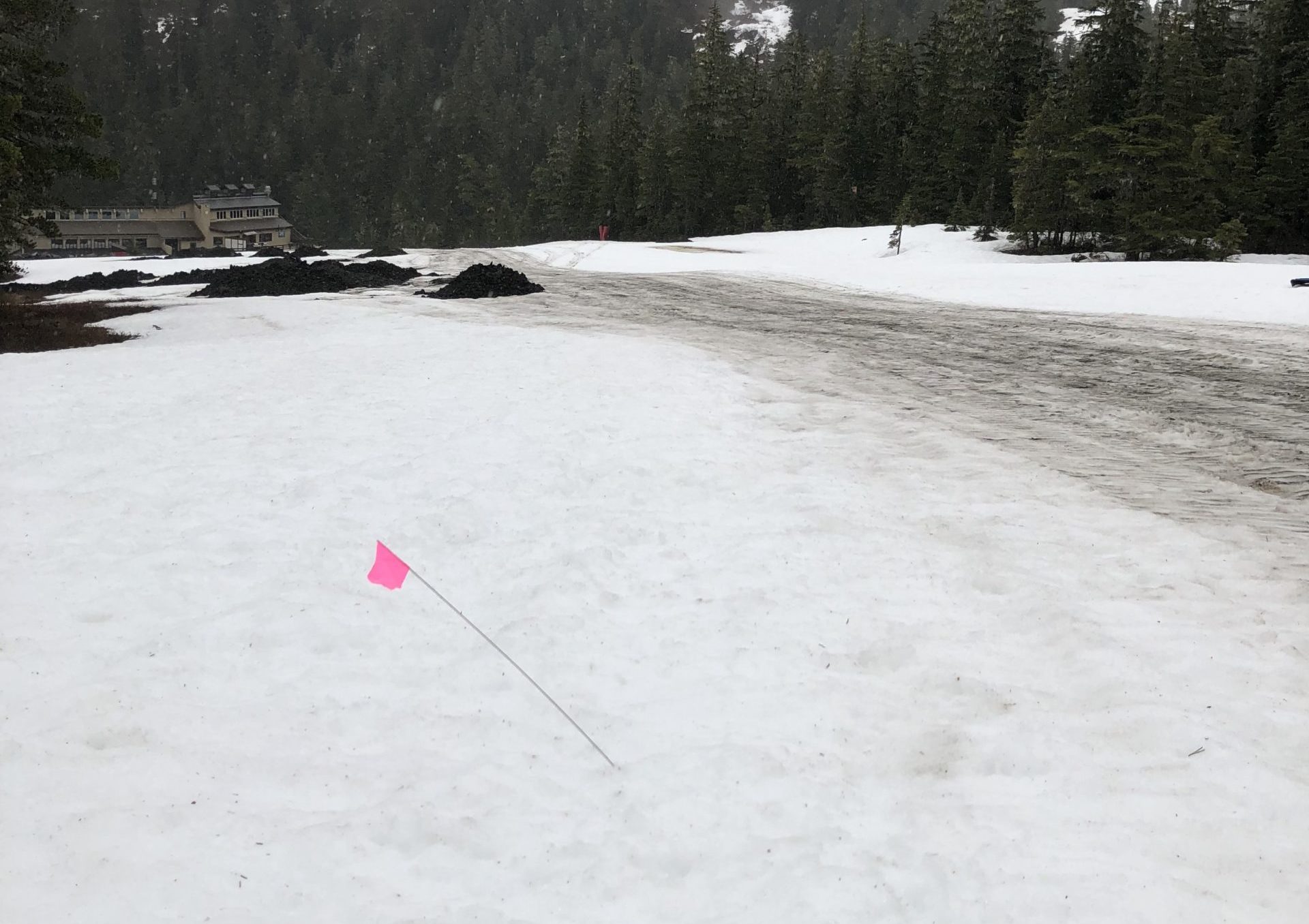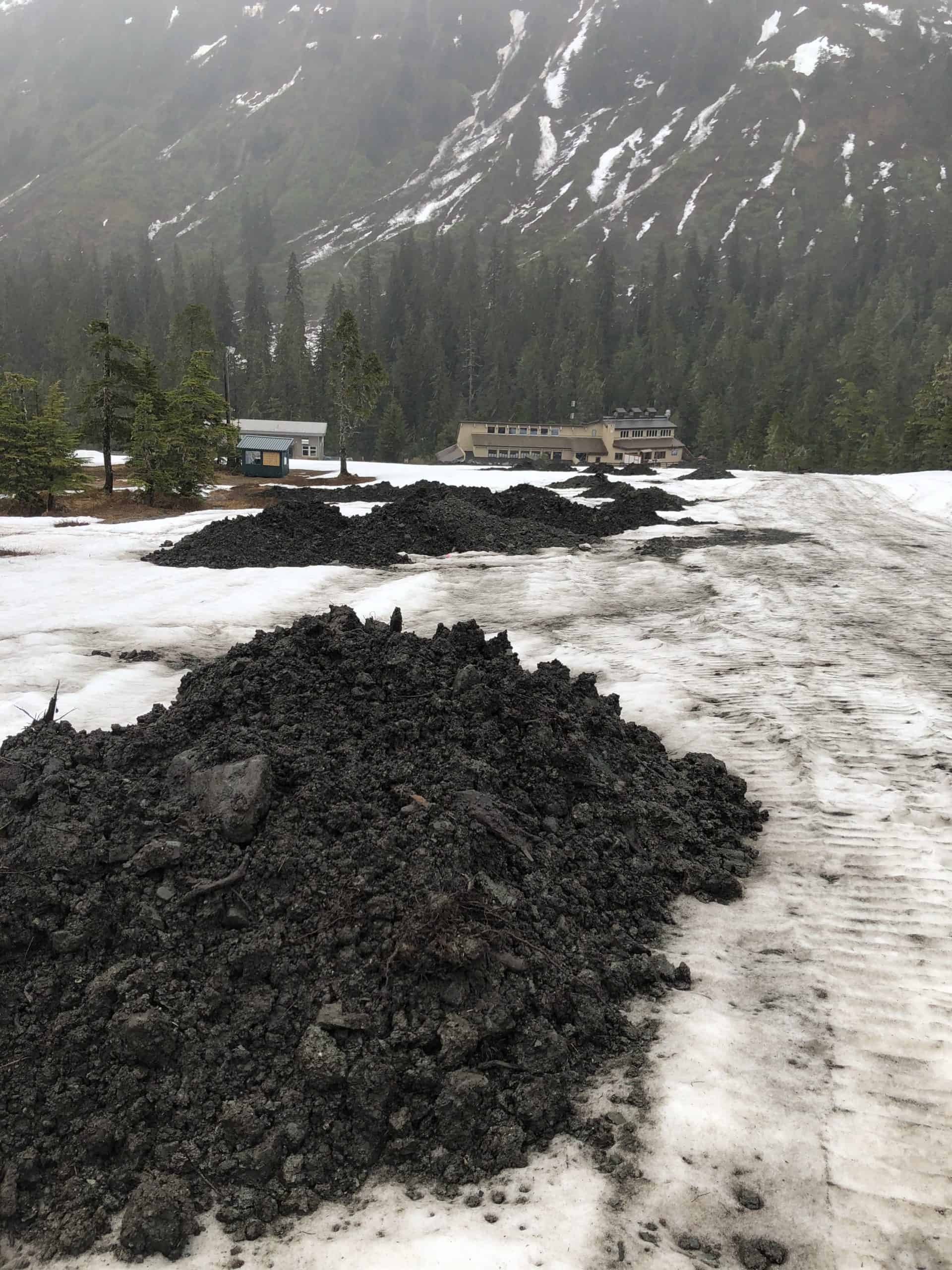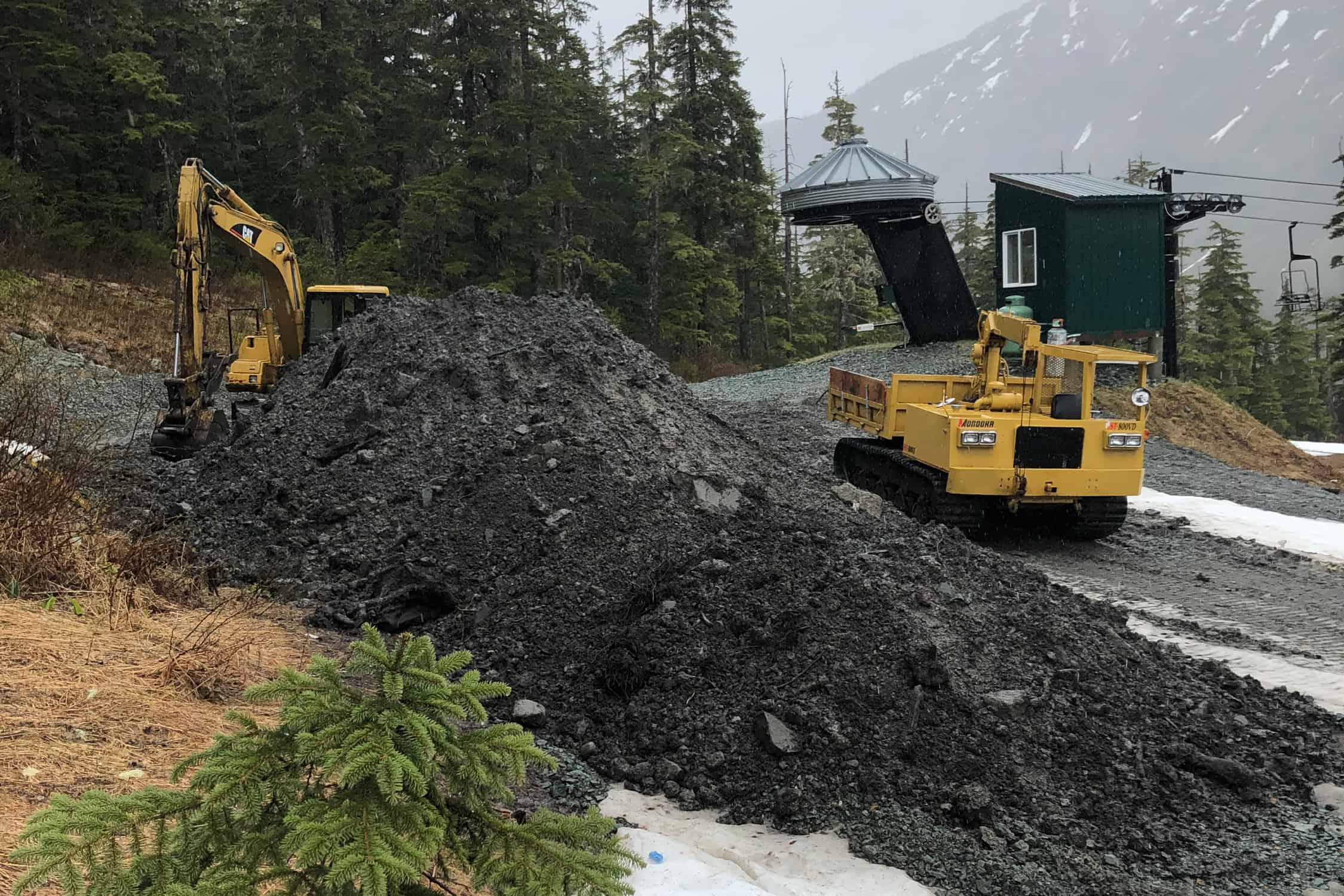Update September 2020: The plan worked! We have way fewer holes to fill with manmade snow, and snowmaking hours on Porcupine should be dramatically reduced!
–
If you have visited Eaglecrest since closing day, you’ve probably noticed our staff working all over the mountain. The Mountain Operations crew has been servicing front line machinery and chairlifts, organizing the shop yard, and making the annual parts inventory reconciliations. The goal has been to address these tasks early this offseason to not interfere with the summer projects as the fiscal year’s end approaches.
Ski Patrol worked through early April, cleaning up the mountain from winter operations. Four crew members stayed on for an extra few weeks, taking advantage of the deep snowpack to replace outdated signage and open new terrain with tree glading and limbing. In the Hilda Glades, numerous lanes were cut all the way down to the Upper Nordic Loop traverse level. Additional work was done between Tug Boat and Insane. Much of this area had never been limbed or gladed with pole saws before. This work should greatly improve the skiing and riding in all snow depths.
Our latest strategy for trail conditioning will utilize snow to minimize environmental impact. The project is underway on the trail Muskeg, our primary beginner slope. Early season, much of our snowmaking efforts are concentrated here, but like everywhere on the mountain, snowmaking at Eaglecrest is uniquely challenged due to our temperate rainforest floor. Nearly every ski area in the world blows snow onto dry, hard, and smooth ground, but Eaglecrest’s muskeg is the polar opposite, a wet sponge littered boulders, stumps, and water holes. It takes us substantially more time, effort, and resources to fill in these bumps and drainages with snowmaking.
The goal is to blow in the beginner area as fast as possible, so we can concentrate our entire firepower on the main mountain. Filling and smoothing the Muskeg trail, combined with last offseason’s projects at the learning beach and Porcupine unloading terminal, will greatly improve snowmaking efficiency across the beginner area. It’s easier said than done, but we’re breaking ground with a groundbreaking solution, using our best friend, Snow, to make it happen.
Last fall, we identified the problem areas and obtained permits from the Army Corp of Engineers. We set pieces of steel rebar in these areas and waited for the snow to fall and the winter season to end. Then we used a metal detector to find the buried rebar beneath the snow and flag the surface.

It’s much easier to drive heavy machinery on snow than the sensitive rainforest floor, which is either a destructive process or a cumbersome one, requiring the use of heavy timber mats to protect the ground and the machines. Using the Marooka, our tracked two-yard dump truck, we can easily transport the fill material across the snow to dump at the flagged locations. Then the snow melts, depositing the material right where we want it…theoretically.
Later in the summer, when all piles are slumped into the holes, we’ll make one pass down the trail, walking the excavator over the timber mats, to smooth out the soil and establish the final grade. We’ll make one more pass to reseed and mulch for erosion control.

Again, the idea has not been executed before, but we’re really excited about the potential results, and it’s an affordable undertaking. For the fill material, we’re using the excavated soil from the Porcupine Lodge’s construction, which was stored in the Nordic parking lot for years. The mulch is a donated byproduct of the tree cutting on Fish Creek Road. All labor and machinery are in-house.
This brand of affordable, outside-the-box problem solving is something Eaglecrest prides itself on. Last summer, we experimented with recycled asphalt from road reconstruction to make better mountain bike trails in our challenging rainforest climate, and the results were amazing. Hopefully, when the snow melts this summer, we can continue our efforts and finish the trail to the top of Hooter chairlift.



